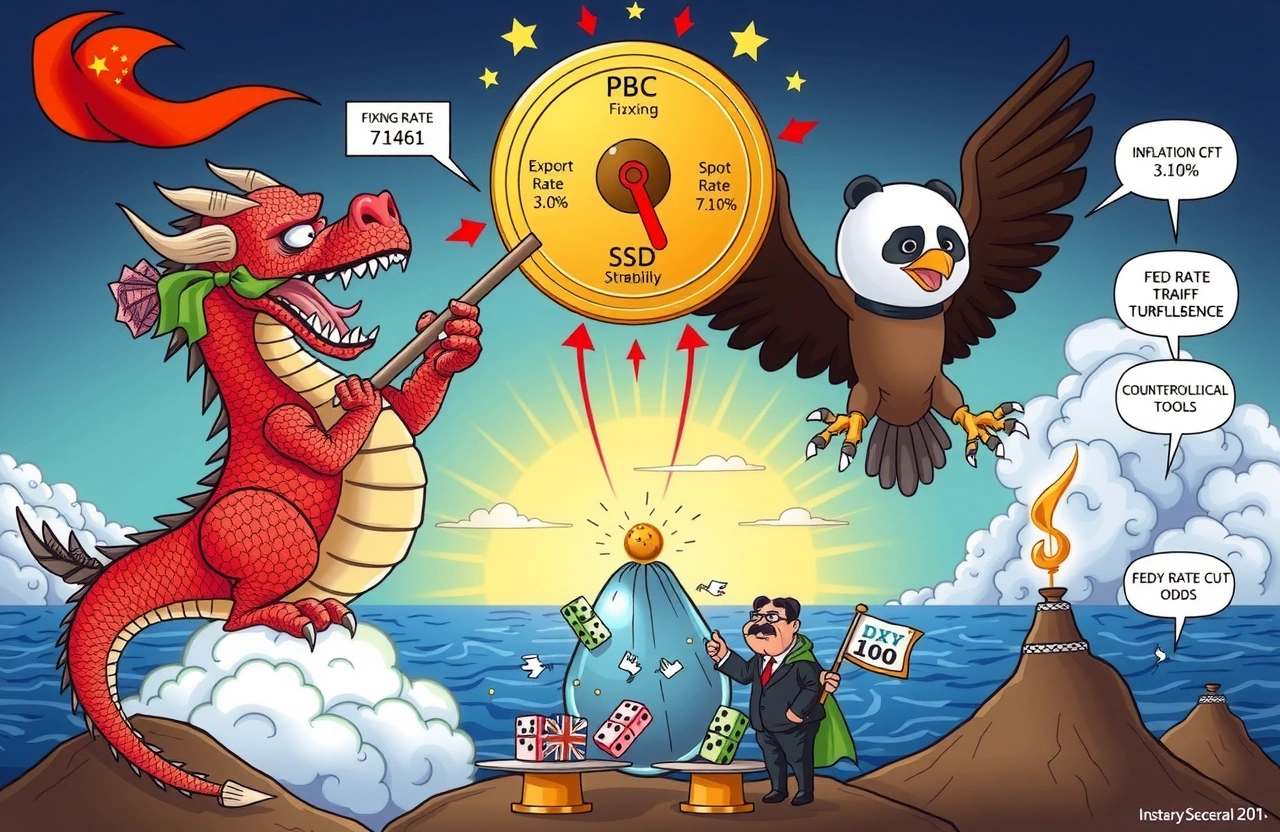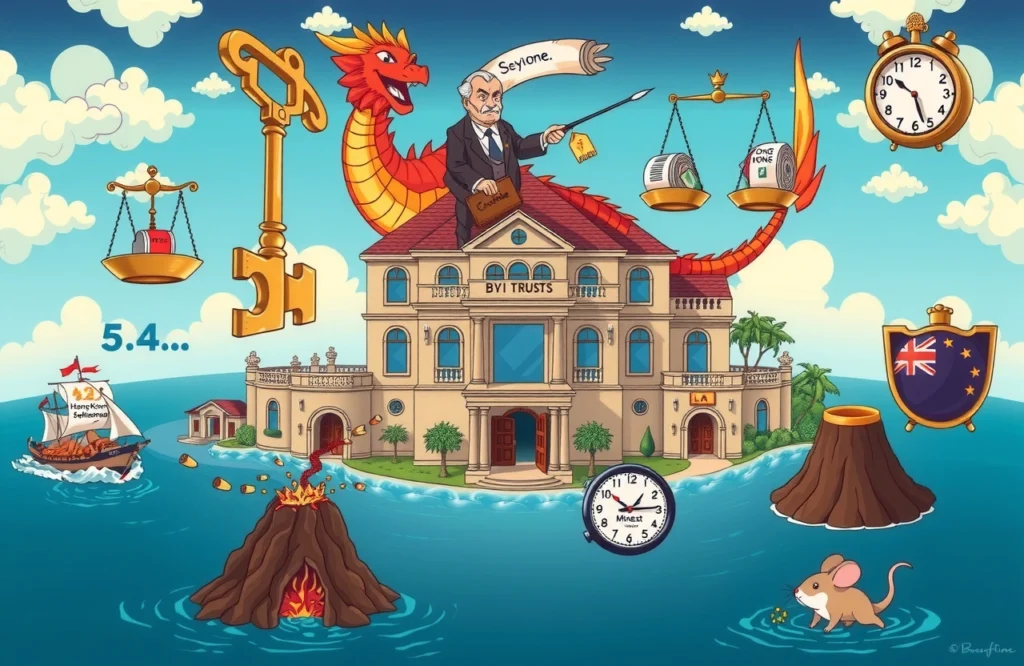Summary: Core Developments in Currency Markets
– US dollar surges 2%+ in July fueled by persistent inflation and fading Fed rate cut expectations
– Chinese yuan shows unprecedented divergence: strongest fixing since November 2022 versus weakening spot rates
– PBOC employs subtle countercyclical adjustments (~200 pip stabilizing effect) amid August 1 tariff uncertainty
– Technical indicators suggest continued dollar strength with potential 99-100 DXY target
– Mixed Chinese economic signals prompt anticipation of Q4 stimulus for currency stability
Currency Shifts Reshape Global Financial Landscape
The US dollar index has unleashed its longest rally of 2023, climbing over 2% through mid-July as hotter-than-expected inflation data reshapes Federal Reserve policy expectations. This dollar rebound triggers parallel currency tremors globally—nowhere more acutely than in China’s foreign exchange markets. Against resurgent dollar strength, the yuan displays unusual bifacial behavior: while the People’s Bank of China (PBOC) maintains firm daily fixings at 7.1461 (the strongest since November), spot markets conversely weaken beyond 7.18 against the dollar. This phenomenon—termed ‘strong fixing, weak spot’ dynamics—reveals central bankers walking a policy tightrope amid titanic currency currents. Several driving forces converge here: stalling European recovery dims the euro’s shine, US tariff deadlines loom, and China’s economic indicators flash contradictory signals. As liquidity patterns reconfigure, understanding this strong dollar rebound becomes essential for global portfolios navigating FX volatility.
The Mechanics Behind the Dollar Rally
Multiple macroeconomic drivers propel the dollar’s most significant advance this year. Technical formations confirm fundamental shifts—the July trading range marked the strongest bullish momentum since May.
Inflation Data Rewrites Fed Expectations
June’s CPI exceeded forecasts at 3.0% year-over-year, while core inflation remained elevated at 2.9%. The data prompted traders to drastically lower September rate cut bets—CME FedWatch now prices just 53.5% probability versus 59.3% previously. Currency traders like Joe Perry of FXStreet note: “Diminishing rate cut expectations remove dollar headwinds while tariffs amplify upside potential.” Consequently:
– EUR/USD declined through key support levels to 1.08
– Commodity currencies AUD and CAD face capital outflow pressures
Tariff Impacts Emerge in Price Indices
While early tariff effects seemed muted due to inventory buffers, inflation readings show tangible impact:
– Furniture/home goods climbed 1.0% monthly
– Appliance prices surged 1.9% monthly
Nomura’s Global Macro Research Head Rob Subbaraman identifies transmission mechanisms: “Inventory drawdowns temporarily masked price effects—once business restocking accelerates this summer, inflation pass-through will intensify.” Concurrent immigration crackdowns tighten labor markets, potentially triggering wage-inflation spirals in construction and agriculture sectors.
China’s Currency Conundrum Decoded
Against dollar strength, China showcases unprecedented currency policy nuance. The divergence between official guidance and market pricing reflects calculated central bank strategy.
PBOC’s Countercyclical Balancing Act
Foreign bank FX desks observe the July 17th fixing defied model projections by approximately 240 pips—a deliberate strengthening signal. Bank of America strategist Claudio Piron explains: “The PBOC maintains optionality through controlled countercyclical intervention—not crushing depreciation pressures but managing their velocity.” Evidence surfaces through:
– Modest daily adjustments averaging ~200 pips
– Offshore yuan (CNH) consistently trading weaker than onshore
Economic Undercurrents Drive Volatility
Mixed economic signals complicate yuan stabilization efforts: Though Q2 GDP beat forecasts at 5.2% growth, June witnessed alarming retail slowdowns:
– Restaurant growth plummeted from 5.9% (May) to 0.9%
– Automobile sales decelerated sharply to 1.0% y/y growth
PBOC’s emerging strategy prioritizes export competitiveness through predictable fixing rates while tolerating spot weakness. As Merchants Securities Zhou Hao observes: “Manufacturers need exchange rate stability while market forces acknowledge dollar fundamentals.”
Strategic Perspectives on Yuan Management
Industry experts interpret Beijing’s currency blueprint differently. Liu Yang, Financial Markets Director at Zheshang CICO, emphasizes asymmetrical management: “We’ll likely see PBOC cushion 80% of dollar upside—permitting mild yuan depreciation but preventing destabilizing spikes.” Contrasting approaches emerge:
Official Stance: Prioritizing exporter stability through fixed reference rates
Market Reality: Capital flows tracking dollar momentum
Economic Policy Crosswinds Ahead
Tariff implementation timelines and fiscal trajectories will determine currency paths through 2024.
The Tariff Domino Effect
President Trump confirmed August 1 implementation for “reciprocal tariffs” alongside negotiations with Vietnam and secondary economies. Analysts identify structural vulnerabilities:
– Re-stocking cycles diminishing US corporate inventory buffers
– Multi-country tariff fronts complicating supply chains
Standard Chartered Economist Enoch Fung warns: “Tariff-generated revenues don’t offset structural deficits—this creates vulnerability when temporary boosts fade.”
Fiscal Foundations Under Scrutiny
Budgetary pressures loom large beneath dollar strength. With deficits projected to surpass 5% of GDP:
– Treasury yields face upward pressure (10-year forecast ~4.9%)
– Debt issuance strains liquidity conditions
Despite dollar technicals favoring gains, Goldman Sachs notes: “Fiscal sustainability concerns could limit upside beyond 100 DXY.” Investors should monitor US Treasury refunding announcements for market-moving signals.
Positioning Portfolios Amid Currency Realignment
Monitor Policy Transmission: Watch PBOC fixings versus spot gaps as indicators of intervention intensityHedge Tariff Exposure: Supply chain mapping exposes companies to August 1 tariff implementation
Position Yield Curve: Anticipate 10-year Treasury yield volatility from fiscal pressures
Crucially, remember today’s yuan divergence isn’t policy failure—it reflects sophisticated economic statecraft. Selective tolerance of spot depreciation preserves ammunition for future currency interventions while accommodating market realities. As exchange rate mechanisms evolve beyond binary strength/weakness paradigms, investors who decode nuance will outperform. Enhance market literacy by tracking Federal Reserve communications alongside PBOC working papers—because tomorrow’s currency winners understand both dollar gravity and yuan elasticity.




